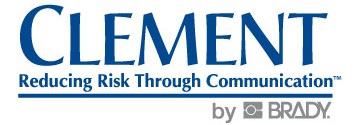Hazard Communication: Your Role as an Employer
A Louisiana food-processing plant was cited by the Occupational Safety and Health Administration (OSHA) for allegedly exposing employees to levels of carbon monoxide that were at least four times above the permissible exposure limit. Additionally, the company received two serious violations for failing to develop and implement a written hazard communication program and for failing to provide safety data sheets for each hazardous chemical in use, including carbon dioxide. – OSHA Case Files
Despite OSHA’s efforts to protect the health of employees who work with hazardous substances, every year more than 190,000 illnesses and 50,000 deaths are attributed to chemical exposures on the job.
As hazard communication evolves on a global scale, it is important to keep in mind the individual employer’s role. If hazardous chemicals exist on your site, you must have a comprehensive program in place to address and reduce the risk such toxins may pose to employees.
The Right to Know and to Understand
When the Hazard Communication Standard was introduced in 1983, it was viewed as a significant step toward improving employee safety, requiring that employers train workers regarding the hazards associated with the chemicals used in their workplace. However, the standard’s flexibility led to inconsistencies in how information was transmitted. Educating employees on how to decipher different types of chemical labels and material safety data sheets was no easy task.
Alignment of the standard with the Globally Harmonized System of Classification and Labeling of Chemicals (GHS) in 2012 — and the subsequent streamlining of hazard information — was widely viewed as the solution to improving employers’ ability to comply with OSHA’s standard and better protect workers.
The major components of the GHS include:
- Harmonized classification criteria for health, physical and environmental hazards of chemicals
- Standardized label elements that are assigned to hazard classes and categories, including signal words, pictograms, and hazard and precautionary statements to convey the hazards to users
- A standardized order of information for safety data sheets (SDSs), formerly known as material safety data sheets
Although GHS brought about many changes in how chemical hazards are communicated to employees, the major framework of the Hazard Communication Standard remained unchanged. So, while much emphasis has been placed in recent years on getting employees up to speed on the components of GHS, it is essential that the core elements of OSHA’s standard remain in focus.
Six Steps to Chemical Safety
The agency published what it considers the six steps employers should take to create an effective hazard communication program. These include:
- Learn the standard and identify staff that will be responsible for implementation.
- Prepare and implement a written hazard communication program. This includes maintaining a list of all hazardous chemicals on-site.
- Ensure all chemical containers are labeled.
- Maintain SDSs for all chemicals.
- Inform and train employees. Training must occur before an employee’s initial assignment and when new hazards are introduced.
- Evaluate and assess the program. Revise as necessary.
Some Final Thoughts
While GHS brought about a renewed interest in the dangers employees face when working with hazardous chemicals, as the Louisiana case illustrates, employers continually fail to uphold their responsibilities regarding chemical safety. Every year hazard communication tops the list of most frequently violated OSHA standards.

